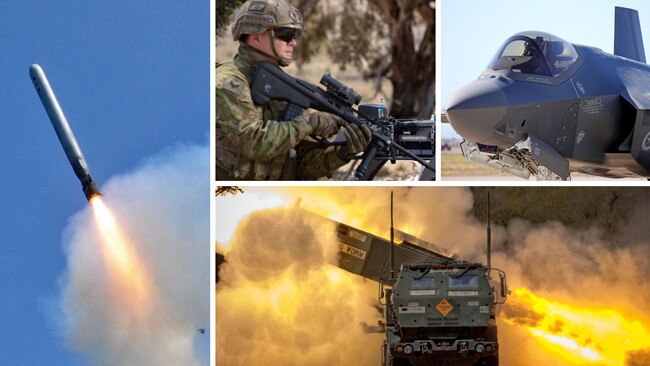Australia’s defence weaponry: What’s in, what’s out
Australia’s defence weapons need to be urgently addressed. See what the proposed multi-billion dollar fire power reshuffle could mean.
National
Don't miss out on the headlines from National. Followed categories will be added to My News.
Military chiefs have been mandated an “urgent call to action” to acquire long-range air, land and sea guided missiles, harden-up our military bases and integrate fighting forces, with the greatest deterioration in national security for 80 years.
The proposed multi-billion dollar buy-up of fire power comes with a whole “reshaping” of the Australian Defence Force, more integrated and ranks boosted from 62,000 to 80,000.
That reshaping includes the ADF only being used for disaster relief as a “last resort” with it deemed not sustainable to use highly trained troops for constant disaster responses.

A focus had to be more on the ADF working not as a service joint force but a fully integrated force and including the domains of cyber and space.
The Army’s mission will specifically be repurposed, around greater long-range firepower projection replacing a lot of its current land-based armour focus which has been deemed as belonging to a by gone era.
Army currently can fire missiles 40 km but under proposed acquisitions will have land-based missile fire range of at least 300 km dramatically enhancing its capabilities.
Central to this will be the HIMAR (High Mobility Artillery Rocket System) which will hand it for the first time in its history the ability to accurately hit surface targets, as has been seen in Ukraine’s fight back against Russia in its war.
Watch Jade Gailberger’s explainer video below on what Defence Strategic Review will cost:
But the DSR has flagged a guided missile program to fire missiles at even longer ranges.
The F-35 stealth fighter is to also be armed with greater missile range.
The navy’s surface fleet size and shape will change with the notion of a small number of large vessels like destroyers and frigates replaced with a larger number of small vessels like corvettes. The exact extent of this change will be determined by a separate maritime review now commissioned and to be made public later this year.
The review was ordered to better integrate the recent agreement to acquire nuclear-powered submarines into future maritime capabilities.
Watch Charles Miranda‘s explainer video below:
Upgrades of military bases have been ordered to commence immediately with an urgent focus on fuel supply, distribution and storage required.
Defence will commit to the Ghost Bat drone program currently in joint development with the US. The ADF will also acquire a range of air and undersea drones, the exact levels being kept confidential.




